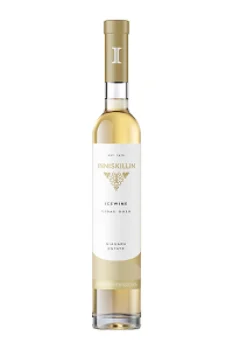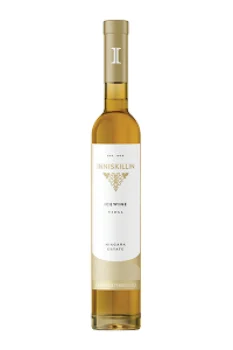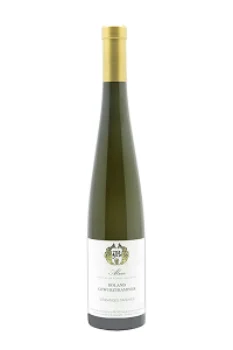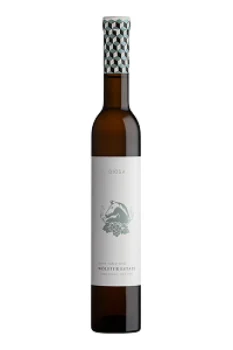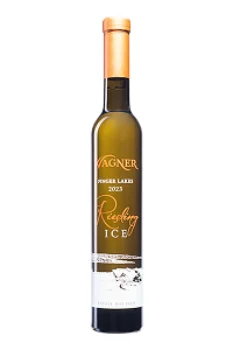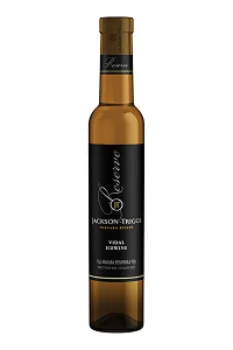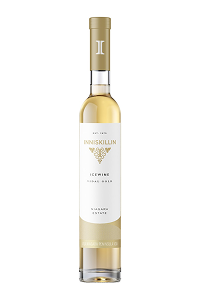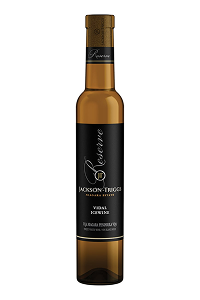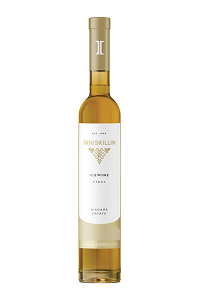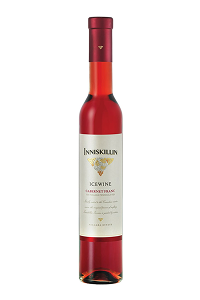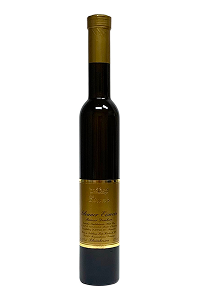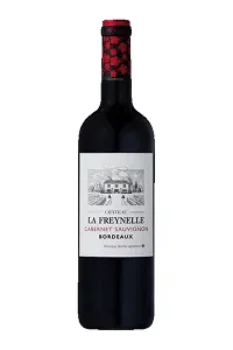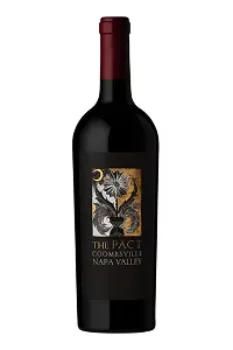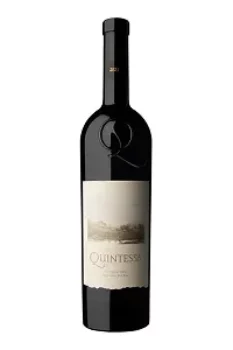Ice wine selection for 2025
Ice wine is pretty unique thanks to its production methods and flavor profile. Cleverly crafted from grapes frozen on the vine, ice wines are a delicate balance of sweetness and acidity. Explore our selection of the best ice wine bottles available this year.

By
Last updated:
10 Best ice wines to add to your collection
The ice wines recommended above are our favorite picks from the many options available on the market this year. They take you on a journey through the best expressions of Canadian ice wine and the goodness of Germany’s icy vineyards, among others.
What are the factors that we considered while curating this list?
- Balance: ice wine should retain enough refreshing natural acidity to even out its decadent sweetness.
- Complex aromas such as honey and dried apricot accompanied by delicate floral or mineral notes indicate if the wine is of high quality.
- How it feels on the palate: ice wines should feel rich, opulent but still retaining an underlying freshness and minerality that varies depending on the grape varietal used.
A bonus point is aging potential: while ice wines are typically consumed young, certain varieties (Riesling and Grüner Veltliner) are so exceptional that as they mature, they develop richer, syrupy and nuttier flavors.
The best ice wine brands from around the world
Several winemakers around the world have mastered the art of crafting ice wines, including US, Canada’s Niagara wineries, Germany’s traditional Mosel producers and the celebrated estates in Austria. Also winemakers from New Zealand and South Africa are making their way onto the playing field, with each ice wine brand bringing their unique expression of terroir and crafting skills.
Let’s have a look at some of the best ice wine brands from around the world and highlight some of their finest bottles.
Inniskillin ice wine: a world leading product and brand
Inniskillin ice wine is often regarded as the flagship brand of Canadian ice wines, produced by the internationally recognized winery Inniskillin. Founded by Donald Ziraldo and Karl Kaiser in 1974 in Niagara, they were one of the first Canadian wineries to produce ice wines, when, in 1984, they harvested frozen Vidal grapes and made a wine labeled ‘Eiswein’.
Their breakthrough came in 1991, when the 1989 Inniskillin Vidal ice wine won the Grand Prix d’Honneur at Vinexpo. Since then, they have maintained their standards and dedication to producing the finest ice wines.
Today, Inniskillin is a household name in the ice wine industry, and here is our favorite bottle recommendation:
Other famous ice wine brands to check out
In addition to Inniskillin Winery in Canada, some other ice wine brands shape the world of this delicious wine. We have selected three of these leading brands from different regions to tell their story, spotlight their contributions and explore their top tier products.
Jackson-Triggs ice wine
The Jackson-Triggs winery is one of the best known Canadian labels. It was started by Donald Triggs and Alan Jackson in 1993 and quickly rose to prominence, improving the quality of Canadian table wines, winning many awards, including multiple Canadian Wine Producer of the Year trophies at the International Wine and Spirit Competition (IWSC) along the way. A standout bottle is their Vidal Icewine, a shining example of the Jackson-Triggs winery.
Pillitteri Estates Winery
The story of Pillitteri Estates Winery began in 1973 when a Sicilian couple, Gary and Lena Pillitteri, settled in Niagara and opened Gary’s Fruit Market. Over the years, the small fruit farm on Niagara Stone Road expanded into wine grape vineyards with their first batch of Vidal Icewine winning a gold medal in a 1988 wine competition. Today, after decades of hard work and commitment to excellence, the family estate spans over 100 acres, producing 100,000 cases of world class wine.
Pillitteri Estates is still family run with the same commitment to producing high quality ice wines.
Weingut Dönnhoff: the superstar of the Nahe
Weingut Hermann Dönnhoff is a German wine producer based in Oberhausen in the Nahe wine growing region of Germany. It is a family owned winery that has been in business since 1750 crafting exceptional wines with a specialization in high quality ice Riesling. Their Oberhäuser Brücke vineyard is uniquely suited for producing ice wine that has achieved cult status among sommeliers. Robert Parker once named this winery a superstar of the region and Helmut Dönnhoff was named German winemaker of the year in 1999 by the Gault Millau Guide to German Wines.
Are Canadian ice wines collectible?
Canadian ice wines can be collectible, especially if they are rare, award winning vintages with limited production. So what makes Canadian ice wine collectible?
- Scarcity and limited production: frozen grapes are manually picked and pressed immediately yielding very little juice, a process that is not guaranteed to happen every year as weather variations don’t always allow for harvest. For instance, the 2020 winter harvest was so small that the vintage is an outstanding one to collectors due to its rarity.
- Impressive aging potential of ice wine: thanks to its acidity and high sugar content, ice wine develops sophisticated notes of caramel, honey and nuts as it matures in the cellar. Some bottles can be stored for over 50 years!
- Brand and winemaker’s reputation: collectors also value bottles from estates with a proven history and excellence in ice wine productions. This includes world renowned brands Pillitteri Estates Winery and Inniskillin, whose Niagara Peninsula Vidal ice wine is quite sought after.
In 2007, a 375ml bottle of Royal DeMaria 2000 Chardonnay Icewine was sold to a buyer for the steep price of $30,000. This bottle was one of the six ice wines from Canada gifted to Her Majesty Queen Elizabeth in 2002, winning several international awards, including gold four times at Les Citadelles du Vin.
Check out our recommendation for a collectible ice wine:
What is ice wine and how is it made?
Ice wine is a sweet, highly concentrated dessert wine produced from the juice of grapes that were naturally frozen on the vine. These grapes may be white varietals like Riesling and Vidal Blanc, or red ones such as Cabernet Franc. The alcohol content of ice wine falls around 10%, lower than is typically seen in wine. This is due to its high levels of residual sugar (160-220 g/L), which is about twice the amount found in a can of soda!
So, how is ice wine made?
- Late harvest and freezing: healthy grapes are left on the vine deep into the winter. Regulations in Canada state that grapes for ice wine can only be harvested at a minimum of 17.6°F (-8°C), once the water inside the berries freezes to concentrate sugar, acids and flavor compounds. Picking teams work quickly to pick up the grapes while still frozen (at night or just before down).
- Grapes are immediately crushed after harvesting in whole clusters. The grapes yield only a small fraction of juice; for context, it takes about 6 lbs (3kg) of frozen grapes to produce a 375ml bottle of ice wine. The thick must obtained after crushing is then settled to remove solids.
- Fermentation is quite slow because of the high levels of residual sugar the wine contains. Temperatures are kept cool to preserve aromatic and special yeast strains (osmotolerant yeasts) may be required to favor fermentation. Contrary to normal table wine where winemakers control carefully the fermentation process, ice wine’s fermentation stops naturally due to the high residual sugars present in the grapes.
- Maturaration, filtering and bottling. Most fermented lots rest in stainless steel vats but some winemakers may choose natural oak or lees to give the wine added texture. Once the maturation phase is complete, the winemakers stabilize and filter the wine to prevent additional fermentation happening in the bottle. Ice wines are typically bottled in small formats (typically in 375ml bottles) given the tiny yields.
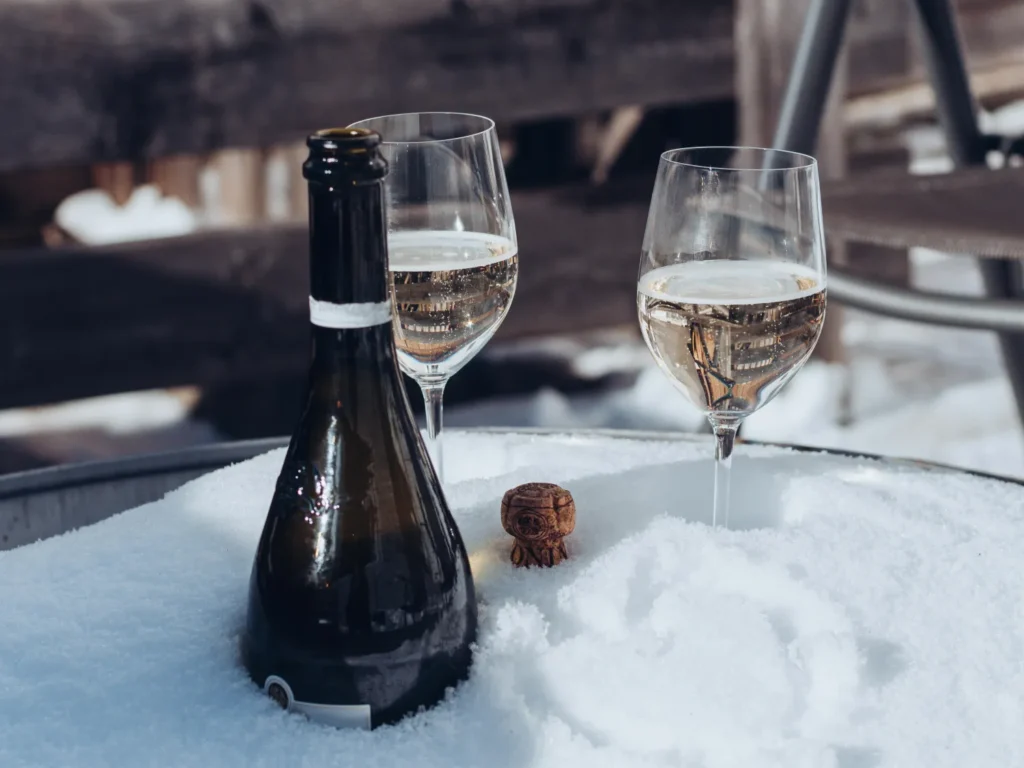
A guide to the types of ice wine by style and region
Ice wines can be classified by their grape variety (like Riesling, Cabernet Franc, or Vidal), production style (still or sparkling), color (white, red, or rosé) and region.
Ice wine grapes require specific weather conditions to freeze sufficiently for the sugars to be concentrated enough. As a result, it is predominantly produced in colder climates like Germany, Canada and some northern parts of the US (New York, Michigan and Ohio states mainly). Producers in other countries with warmer weather conditions may harvest their grapes and freeze them commercially using cryoextraction but these wines cannot be labeled as ‘ice wine’ in Canada and US.
Let’s have a look at some of the top ice wine regions, along with our favorite producers from each.
| Region | Best Ice Wine Producers | Grape Varieties | Structure & Flavor |
|---|---|---|---|
| Canadian Ice Wine | Inniskillin, Pilliteri, Jackson-Triggs, Cave Spring | Vidal Blanc, Cabernet Franc | Bright acidity, syrupy sweetness, tropical fruit notes and hints of red berries. |
| German Ice Wine | Weingut Fritz Windisch, Donnhoff, Dr. Loosen | Riesling, Gewürztraminer | Rich, sweet and complex, with subtle herbs, caramel and tropical and stone fruit notes. |
| American Ice Wine | Kiona, Wagner, Koenig, Meeker | Riesling, Vidal Blanc, Cabernet Sauvignon | Full bodied, rich and syrupy, with notes of tropical and citrus fruits as well as vanilla and ginger. |
| Austrian Ice Wine | Weingut Stift Klosterneuburg, Anton Bauer, Markus Huber | Grüner Veltliner, Riesling, Chardonnay | Lively acidity, concentrated aromas of stone fruits, honey, spice and mineral. |
| Italian Ice Wine | Casa Ronsil, Cascina Baricchi | Avanà, Becuet, Chatus | Intensely sweet and fruity, with a vibrant and refreshing acidity as well as hints of spice. |
Did you know? Under the Canadian Icewine Regulations wine may be labeled as ice wine only if made exclusively from grapes naturally frozen on the vine. In the US, although there is no formal definition, regulatory history provides for similar provisions where grapes frozen after harvesting cannot be labeled as ice wine but they may use alternative terms like “iced wines” and disclose on the label that the grapes were frozen with cryogenic or ice box methods.
Ice wine from Canada
Ice wine from Canada was first produced in 1972 by Walter Hainle, a German immigrant winemaker in Okanagan who wanted to salvage his grapes after an unexpected frost. What started as a mistake has now grown into a thriving industry thanks to the country’s harsh winters. Canada is the world’s leading producer of ice wines and they make use of Cabernet Franc and Vidal grapes under strict regulations to produce delicious, premium tasting ice wines.
Austrian and German ice wine: the goodness of eiswein
German ice wine is called ‘eiswein’, the same as is seen in Austria. In Germany, only Riesling, Gewürztraminer and other grape varieties that have been bitten by frost are permitted to be bottled as eiswein. German ice wine is one of the most famous and expensive sweet wines and Riesling is considered the most noble grape for ice wine production in the country.
American ice wine from Napa Valley, Michigan and Ohio
In the US, ice wine is mainly produced in Michigan, Ohio and New York where the winters are cold enough to accommodate its production. Common grape varieties used in American ice wine include Riesling, Cabernet Sauvignon, Zinfandel and even Shiraz. The US law for icewines states that the grapes used must be naturally frozen but winemakers may produce ice wine in Napa Valley from commercially frozen grapes, which are then labeled as ‘iced wine’ or ‘dessert wine’. There are Northern Michigan wineries that still follow German laws to guide their winemaking process.
Types of ice wines: still and sparkling treasures
By production style, ice wines can be still or sparkling. The style of the wine plays a role in its mouthfeel on the palate including its flavor, texture, structure and food pairings. So, what is the difference between these two styles?
- Still ice wine is flat and has no bubbles and it can be made from red or white grape varieties. It is the most commonly produced variety worldwide and is mainly used to enjoy along with dessert or even as a dessert on its own!
- Sparkling ice wine, on the other hand, undergoes a second fermentation process to create bubbles that provide an exciting contrast to its intense sweetness. While it is less common, the few bottlings made are truly special for taste and pair very elegantly with cheese boards.
| Style | Best Ice Wine | Common Varietals | Residual Sugar |
|---|---|---|---|
| Still Ice wine | Gold Vidal Icewine 2021 – Inniskillin | Vidal Blanc | 245 (g/L) |
| Sparkling Ice Wine | Sparkling Icewine 2003 – Inniskillin | Vidal Blanc | 170 (g/L) |
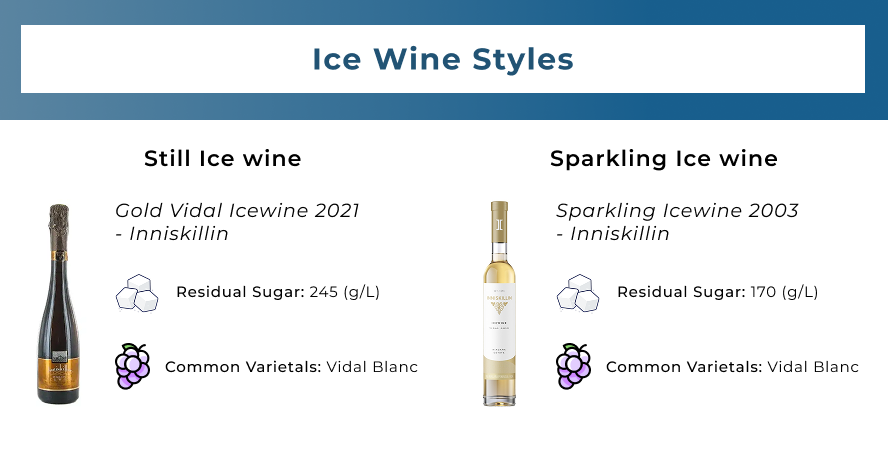
Food pairing essentials for every type of ice wine
Full bodied red wines are known for their richness, intensity and strong tannins. They often showcase deep fruit flavors and gain added complexity from oak aging. Ice wines are syrupy and rich with a bright acidity anchoring the taste to prevent it from feeling heavy. Traditionally, they are served with dessert but a well respected rule is to never serve a glass of ice wine with a pastry that is sweeter than the wine. Apart from desserts, these wines also pair excellently with strong, savory food such as creamy cheeses and spicy Asian cuisine, whose flavors are naturally complemented by the wine’s natural acidity.
We have curated a selection of different types of ice wine and food pairings to go with each one that will elevate your dining experience.
| Food | Best Ice Wine | Type & Structure |
|---|---|---|
| Banana pudding, peach crumble, fresh fruit panna cotta and pear tart | Reserve Vidal Icewine 2022 – Jackson-Triggs | Intensely aromatic notes of honey, pear, pineapple and nuts. |
| Cheesecake, crème brûlée | Riesling Icewine 2021 – Inniskillin | Notes of lemon grass and honeydew melon, with citrus and fresh lime flavors. |
| Apple pie, crumb topped strawberry rhubarb, blueberry pie | Cabernet Franc Icewine 2022 – Inniskillin | Balanced richness and acidity with moderate length and flavors of cherry, strawberries and cream. |
| Almond desserts, white chocolate mousse, dark chocolate | Vidal Icewine 2023 – Inniskillin | Great natural acidity and a long, rounded finish mingle with aromas of mango, honey and candied brown sugar. |
| Foie gras, grilled eel, duck, lamb, pork | Windisch Mainzer Silvaner Eiswein 2014 – Weingut Fritz | Very light and sweet wine with a pronounced aroma of cherries, red berries and plums. |
| Thai red curry, tacos, pizza | Gold Vidal Icewine 2021 – Inniskillin | Intense layers of ripe fruit, clove, vanilla, velvety texture and crisp acidity. |
Cabernet Franc, Riesling and other ice wine grape varieties
The specific grape variety used in crafting an ice wine plays a role in determining its flavor, aroma and overall structure of the wine. The grapes work hand in hand with terroir, climate conditions while growing, as well as the winemaking technique. Below are some of the top grape varieties often used in producing ice wine.
Ice wines from white grapes:
Ice wines from red grapes:
The grapes used to make ice wines are subjected to harsh weather conditions and long periods on the vine. They have to be hardy enough to withstand the cold and not be affected by noble rot or decay before harvesting.
Spotlight on Riesling ice wine
Riesling ice wine is a rich and luxurious expression of ice wine made from Riesling grapes that freeze naturally on the vine. This winter treat is typically pale lemon to deep gold in color with concentrated sugars giving it extra sweetness and depth. Riesling ice wine is complex and aromatic and often has flavors of dried stone fruit, honey and tropical fruits. Below, you will find our recommended bottle of Riesling ice wine and its tasting notes.
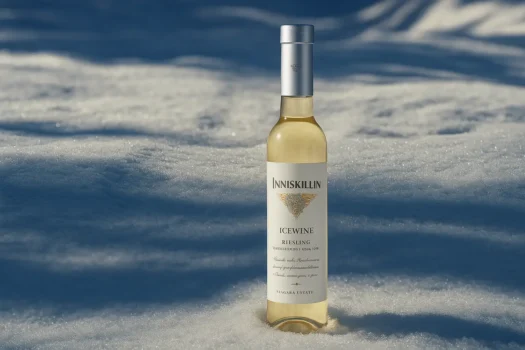
Why is ice wine so expensive? Ice wine prices broken down
The average ice wine price costs more than a regular bottle of wine. Ice wines are bottled in small 375ml bottles and you should expect to spend more than $30 for a good quality ice wine. What factors influence the cost of ice wine? Let’s break them down together:
- The risky production process that depends on unpredictable weather conditions plays a role in setting the premium price tag attached to ice wine.
- Pressing the frozen grapes only yields a low amount of juice reducing the amount available for supply, making it cost more.
- Grapes used for ice wine are often hand harvested in cold temperatures and at night with increased labor costs for the winemakers.
- Strict regulations guide its production, which winemakers must adhere to and this contributes to its status as a unique, premium product.
How to drink ice wine: determining the serving temperature
Drinking ice wine is a memorable sensory experience, as every bottle contains a burst of flavors that will invade your senses from start to finish. Ice wine should be served cool but not very cold, and a temperature of 50°F(10°C) is the sweet spot to achieve that perfect taste. Other essential serving tips include:
- Serve it in a dessert wine glass or tulip shaped glass to concentrate its aromas and flavors.
- Decanting is not recommended; just open up and pour!
- Pair your ice wine with a sweet treat, soft cheeses or savory dishes.
Have a look at the table below to get a picture of the perfect serving conditions for various ice wines.
| Ice Wine & ABV | Tannin / Acidity | Serving Temp | Aging Potential |
|---|---|---|---|
| Inniskillin Cabernet Franc Icewine 2022, 9.5% ABV | Polished tannins, vibrant acidity | 45-55°F (7-12°C) | 10 – 12 years |
| Inniskillin Gold Vidal Icewine 2021, 9.5% ABV | Low tannins, bright acidity | 45-55°F (7-12°C) | 5 – 10 years |
| Inniskillin Riesling Icewine 2021, 9.5% ABV | Low tannins, high acidity | 45-55°F (7-12°C) | 15 – 30 years |
| Inniskillin Vidal Icewine 2023, 9.5% ABV | Light tannins, fresh acidity | 45-55°F (7-12°C) | 5 – 10 years |
| Jackson-Triggs Reserve Vidal Icewine 2022, 9.2% ABV | Polished tannins, bracing acidity | 45-55°F (7-12°C) | 5-10 years |
Smart tips for storing and keeping ice wine
Ice wine is delicate therefore proper storage is needed to preserve its flavor and structure while extending its time spent in your cellar. Let’s see together how ice wine should be stored?
- Keep unopened bottles in a cool and dark place, while opened bottles can be stored in a wine cooler or fridge.
- Store at a consistent temperature range, between 50 to 59°F (10 to 15°C).
- Unopened bottles should be kept lying on their side to keep the corks moist, while opened bottles may stand upright.
- To preserve freshness in an opened bottle of ice wine, re cork it before storage or, use a vacuum stopper or a screw cap.
- Keep away from fluctuating temperatures, light, vibrations and the heat of the kitchen.
How to choose the best ice wine for beginners
If this is your first time reading about ice wine and you’re wondering where to start, then this guide is for you. The first step to picking the best ice wine for you is to know what you like: do you enjoy intensely sweet wines? Once you’re sure of that, then you can consider these other tips:
- Start with a lighter, more approachable ice wine such as Riesling.
- Decide if you’d prefer still or sparkling ice wines.
- Pair your ice wine with a dessert that is not as sweet as it is.
- Serve it in small portions at a time, as the intensity can be overwhelming.
A bonus tip is to make sure that you read the labels properly; you want to pick an “ice wine” or “eiswein”, and not an “iced wine”, as the latter is frozen mechanically and does not retain all the natural flavors or the original.
You might also be interested in
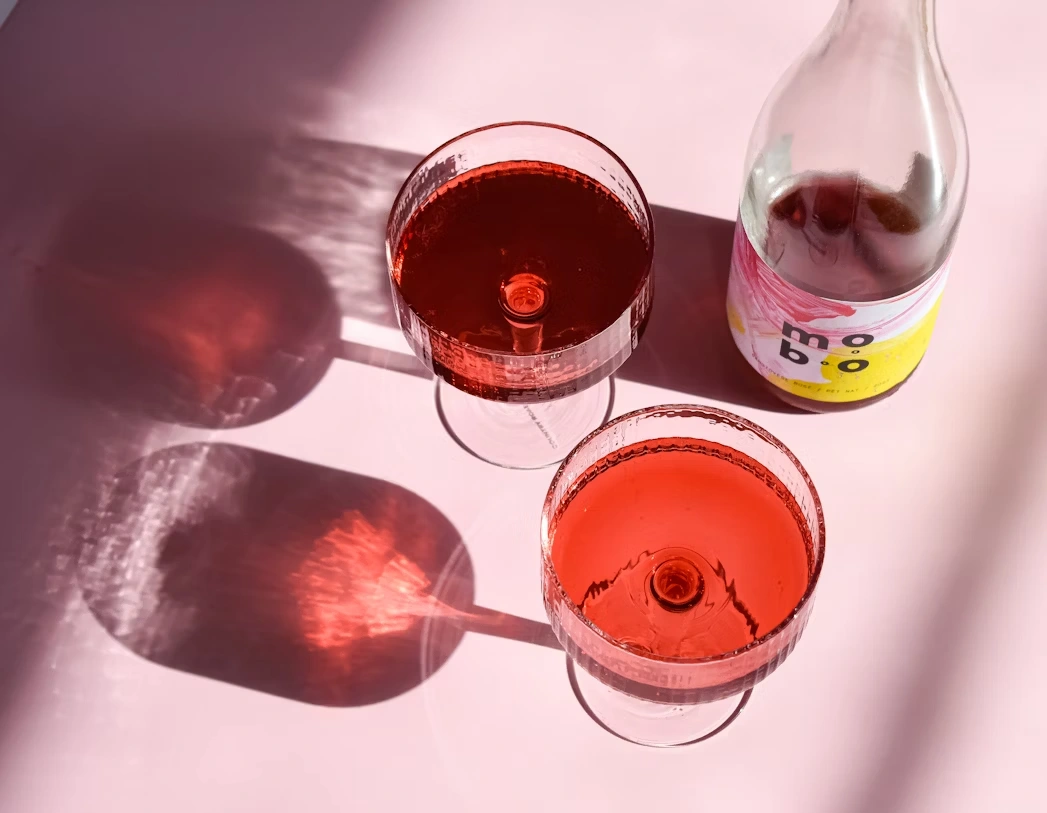

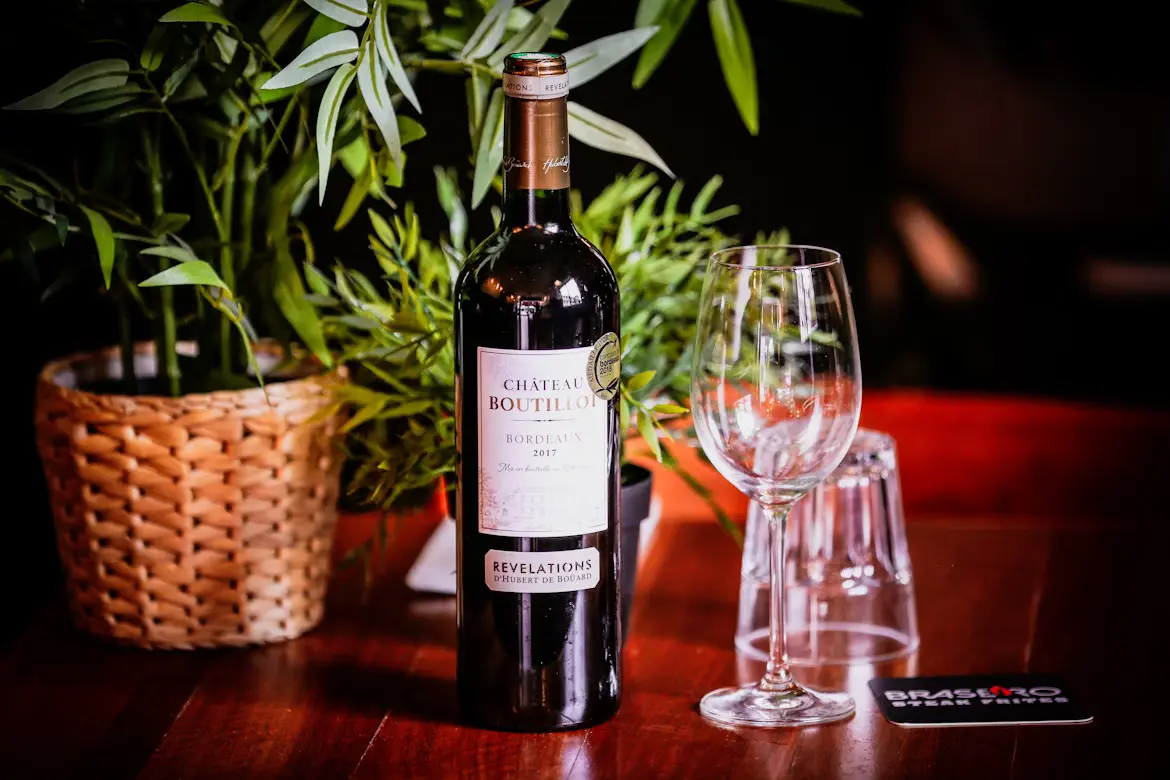
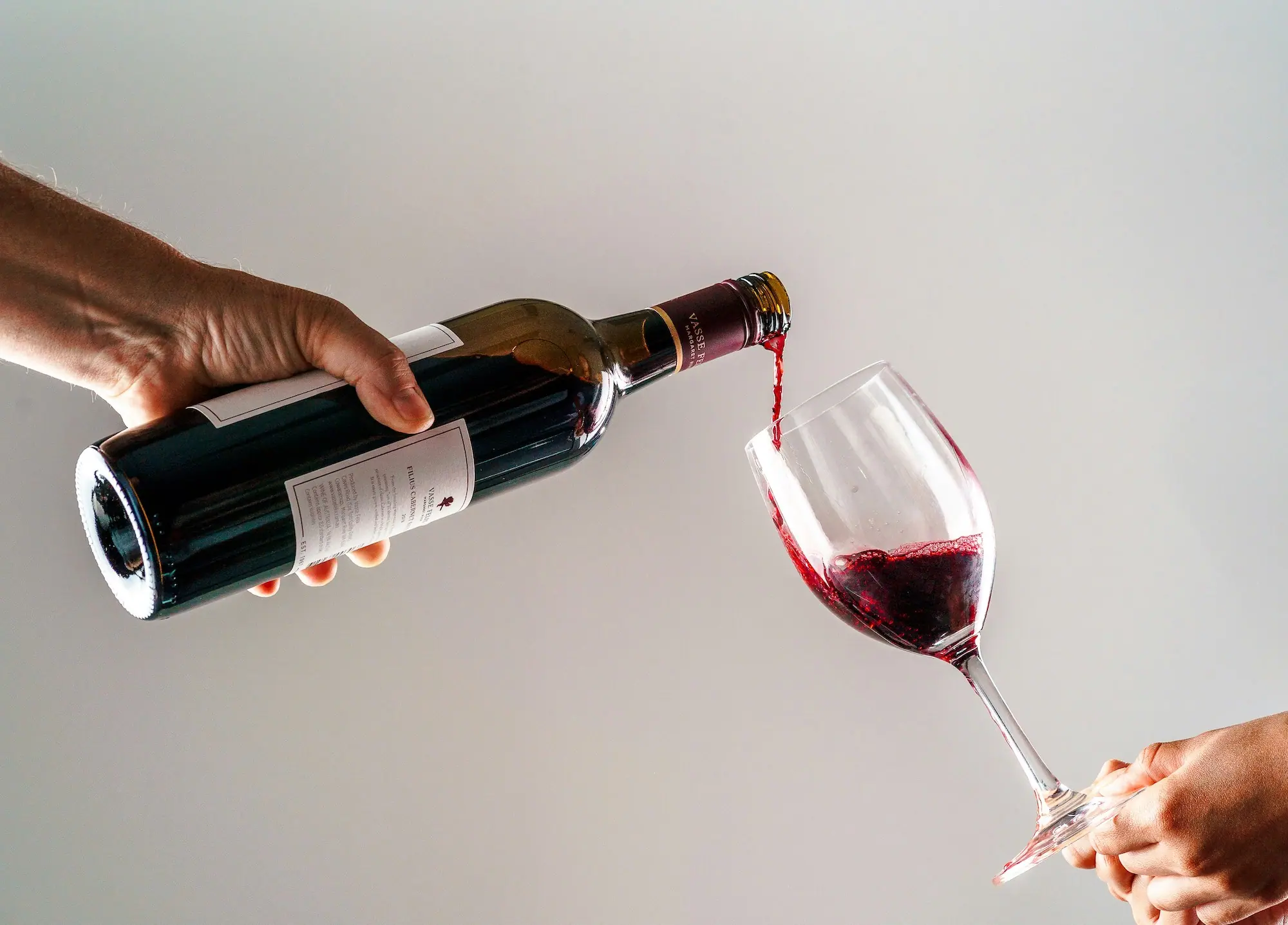
FAQs Best ice wine
The best Canada ice wines from Niagara that we recommend include the Inniskillin Icewine Cabernet Franc 2008, Equifera Icewine Cabernet Franc 2008 and Pillitteri Estates Winery Vidal Icewine 2004. These three wines made it to our list of top ice wines because of their high quality and premium taste characteristics.
Yes, you can choose to drink your ice wine straight or add it to cocktails. To best enjoy your ice wine, serve it chilled in a dessert wine glass or white wine glass. It tastes excellent when paired with sweet dishes like fruit pies, rich dark chocolates and soft cheeses like Brie or pungent cheeses like Camembert.
Yes, you can cook with ice wine. Its fruity aromas, high acidity and sweetness make it perfect when used in glazes, marinades, sauces, desserts and dressings. Ice wine can also be used as a substitute for sweeteners in certain recipes such as French onion soup or ice cream. When you cook with ice wine, you’re adding a unique dimension to your dishes.
Canadian ice wine is a full bodied sweet wine style that is produced from naturally frozen grapes like Vidal and Cabernet Franc. These wines have intensely concentrated aromas and common tasting notes include honeysuckle, apricot, as well as tropical and citrus fruits.
The average ice wine price costs above $30 for a 375ml bottle and premium bottles from outstanding vineyards may cost more. The ice wine cost is due to the strict regulations surrounding its production, the fact that it is produced in limited quantities and its unique taste profile.
You can buy ice wines at any wine store near you or online on wine websites. Before you attempt to buy ice wines, make sure to read expert reviews and recommendations from sites such as ours. Doing this will guide your decision making process and help you select the right ice wines for your taste preferences.
No, iced wine and ice wine are not the same. Ice wine refers to a sweet wine style that is produced from grapes that have been naturally frozen on the vine. Iced wine on the other hand, is typically made from commercially frozen grapes by winemakers in countries that don’t enforce strict regulations on the production of ice wine.
The best ice wine glasses to serve ice wine from Canada include the small dessert glass, a universal white wine glass or a tulip shaped glass. These wine glasses are shaped to concentrate the flavors and aromas of the wine, allowing it to waft towards your nostrils. It is advisable that you serve only small portions at a time, as the intensely sweet wine might prove to be overwhelming.
The key to serving Niagara Falls ice wine is to understand its structure and type. A typical ice wine is sweet, concentrated, full bodied and vibrantly acidic with low tannins. You should serve it slightly cool in a dessert wine glass that lets you appreciate its fruity aromas. Ideal food pairing options include apple crumble, cheesecake or savory Thai curry.



